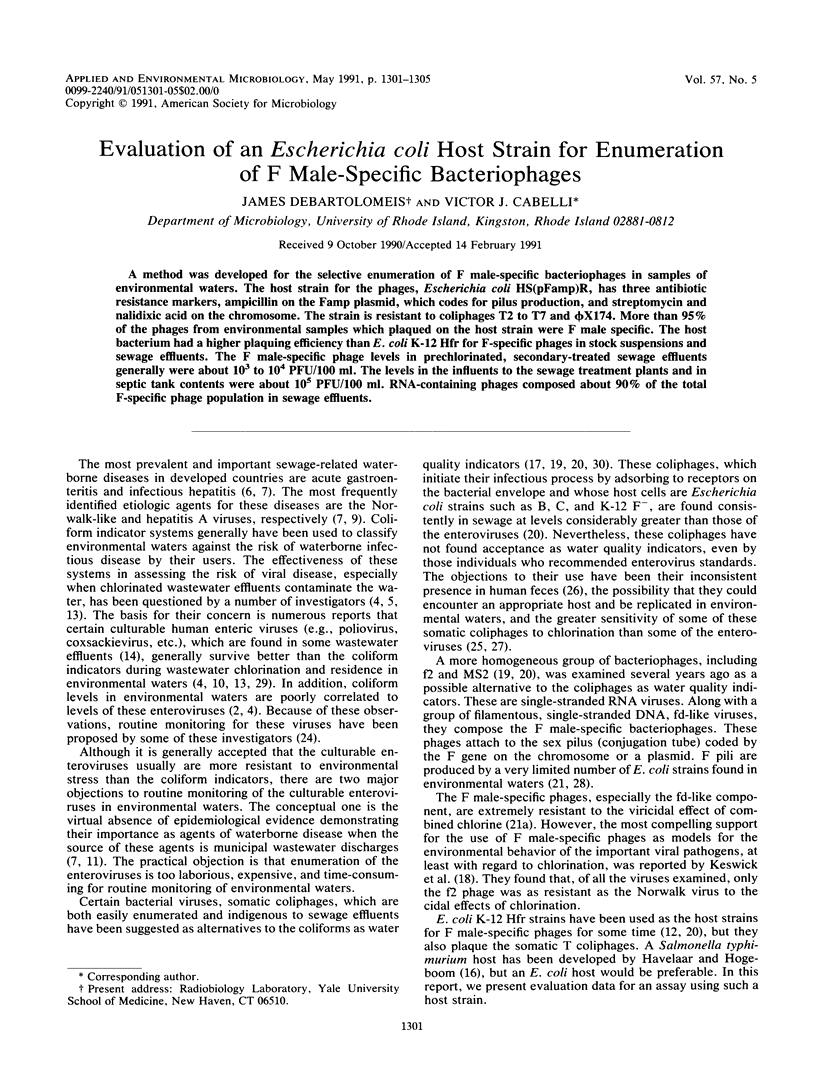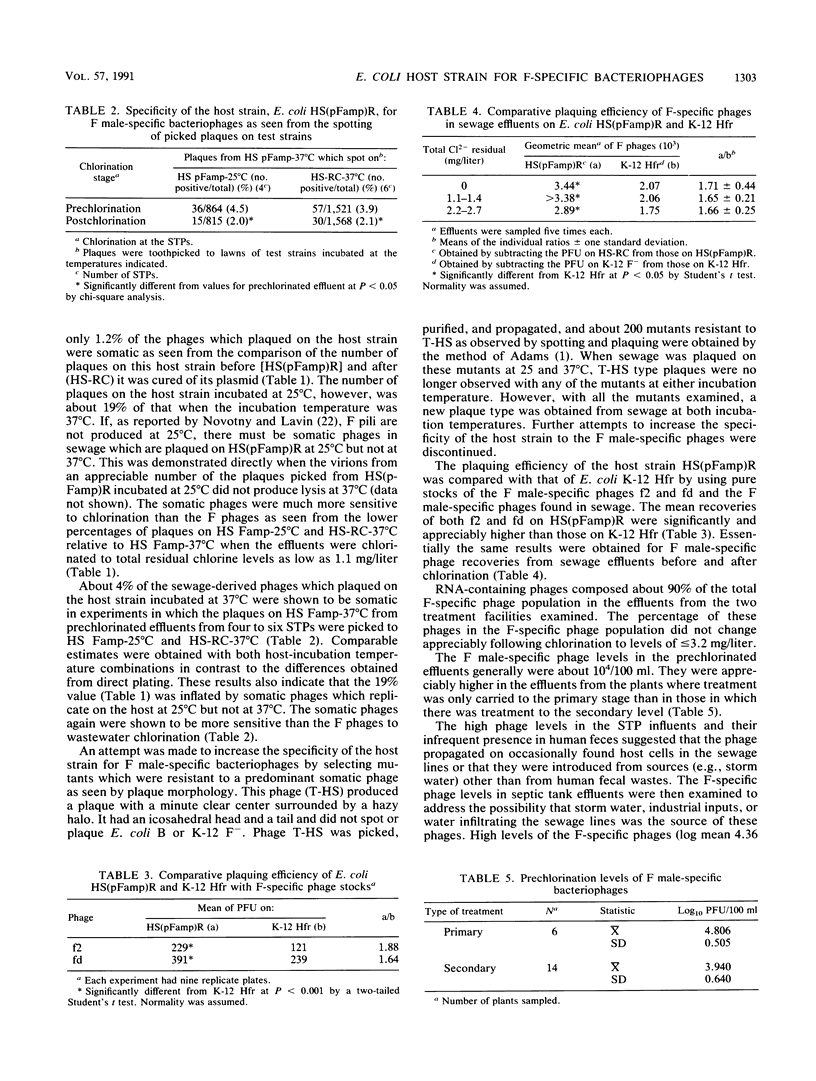Abstract
A method was developed for the selective enumeration of F male-specific bacteriophages in samples of environmental waters. The host strain for the phages, Escherichia coli HS(pFamp)R, has three antibiotic resistance markers, ampicillin on the Famp plasmid, which codes for pilus production, and streptomycin and nalidixic acid on the chromosome. The strain is resistant to coliphages T2 to T7 and phi X174. More than 95% of the phages from environmental samples which plaqued on the host strain were F male specific. The host bacterium had a higher plaquing efficiency than E. coli K-12 Hfr for F-specific phages in stock suspensions and sewage effluents. The F male-specific phage levels in prechlorinated, secondary-treated sewage effluents generally were about 10(3) to 10(4) PFU/100 ml. The levels in the influents to the sewage treatment plants and in septic tank contents were about 10(5) PFU/100 ml. RNA-containing phages composed about 90% of the total F-specific phage population in sewage effluents.
Full text
PDF




Selected References
These references are in PubMed. This may not be the complete list of references from this article.
- Berg G., Dahling D. R., Brown G. A., Berman D. Validity of fecal coliforms, total coliforms, and fecal streptococci as indicators of viruses in chlorinated primary sewage effluents. Appl Environ Microbiol. 1978 Dec;36(6):880–884. doi: 10.1128/aem.36.6.880-884.1978. [DOI] [PMC free article] [PubMed] [Google Scholar]
- Burns R. W., Sproul O. J. Virucidal effects of chlorine in wastewater. J Water Pollut Control Fed. 1967 Nov;39(11):1834–1849. [PubMed] [Google Scholar]
- Corliss T. L., Cohen P. S., Cabelli V. J. R-Plasmid Transfer to and from Escherichia coli Strains Isolated from Human Fecal Samples. Appl Environ Microbiol. 1981 Apr;41(4):959–966. doi: 10.1128/aem.41.4.959-966.1981. [DOI] [PMC free article] [PubMed] [Google Scholar]
- Havelaar A. H., Furuse K., Hogeboom W. M. Bacteriophages and indicator bacteria in human and animal faeces. J Appl Bacteriol. 1986 Mar;60(3):255–262. doi: 10.1111/j.1365-2672.1986.tb01081.x. [DOI] [PubMed] [Google Scholar]
- Havelaar A. H., Hogeboom W. M. A method for the enumeration of male-specific bacteriophages in sewage. J Appl Bacteriol. 1984 Jun;56(3):439–447. doi: 10.1111/j.1365-2672.1984.tb01372.x. [DOI] [PubMed] [Google Scholar]
- Hilton M. C., Stotzky G. Use of coliphages as indicators of water pollution. Can J Microbiol. 1973 Jun;19(6):747–751. doi: 10.1139/m73-120. [DOI] [PubMed] [Google Scholar]
- Keswick B. H., Satterwhite T. K., Johnson P. C., DuPont H. L., Secor S. L., Bitsura J. A., Gary G. W., Hoff J. C. Inactivation of Norwalk virus in drinking water by chlorine. Appl Environ Microbiol. 1985 Aug;50(2):261–264. doi: 10.1128/aem.50.2.261-264.1985. [DOI] [PMC free article] [PubMed] [Google Scholar]
- Novotny C. P., Lavin K. Some effects of temperature on the growth of F pili. J Bacteriol. 1971 Sep;107(3):671–682. doi: 10.1128/jb.107.3.671-682.1971. [DOI] [PMC free article] [PubMed] [Google Scholar]
- Osawa S., Furuse K., Watanabe I. Distribution of ribonucleic acid coliphages in animals. Appl Environ Microbiol. 1981 Jan;41(1):164–168. doi: 10.1128/aem.41.1.164-168.1981. [DOI] [PMC free article] [PubMed] [Google Scholar]
- Payment P., Larose Y., Trudel M. Polioviruses as indicator of virological quality of water. Can J Microbiol. 1979 Oct;25(10):1212–1214. doi: 10.1139/m79-190. [DOI] [PubMed] [Google Scholar]
- Shaw D. R., Cabelli V. J. R-plasmid transfer frequencies from environmental isolates of Escherichia coli to laboratory and fecal strains. Appl Environ Microbiol. 1980 Oct;40(4):756–764. doi: 10.1128/aem.40.4.756-764.1980. [DOI] [PMC free article] [PubMed] [Google Scholar]


